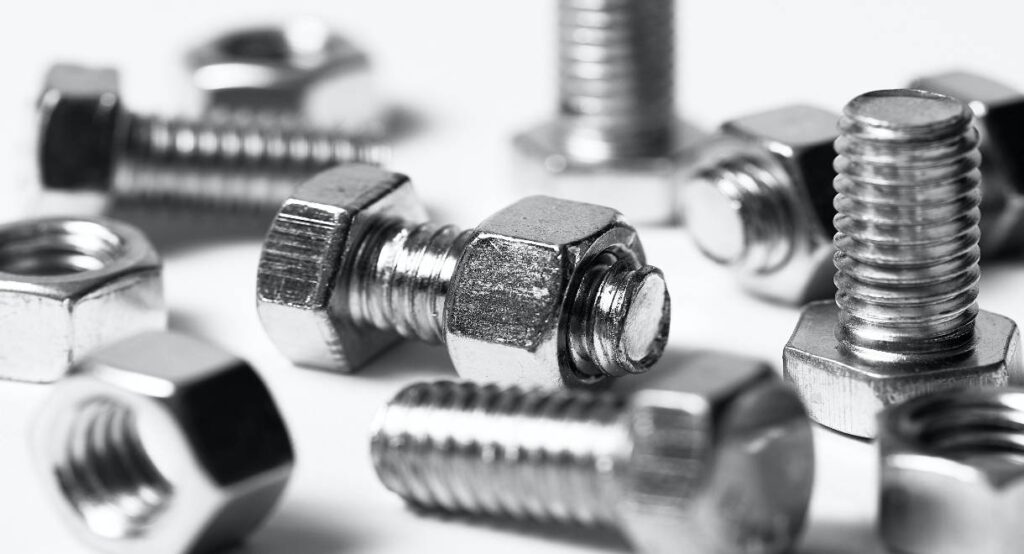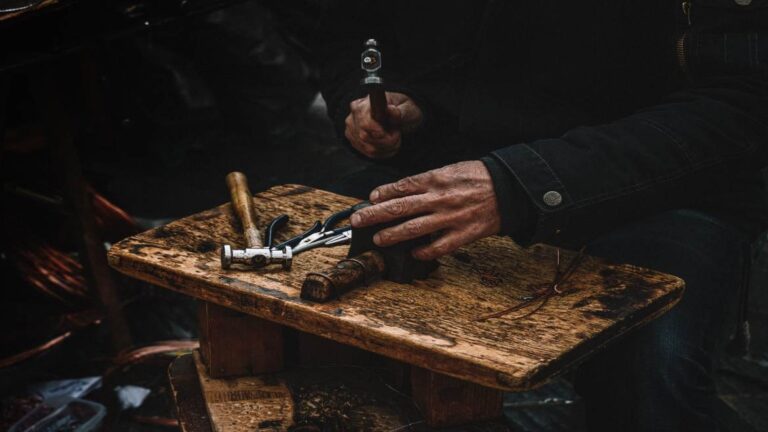Time to put a long-running argument to rest nails vs. screws. Both are examples of vintage wood-fastening methods that still work today. How do you decide which one to use for a particular project, though?
A few decades ago, the answer to that question was actually simpler than it is now, as there are many more nail and screw sizes, types, and driving methods available. Read this article and find out which one is better for you.
The Differences Between Wood Nails And Screws
Project Size And Tool Choice
Because they are typically stronger and more affordable than screws, wood nails are frequently chosen for big projects like framing houses and installing hardwood floors.
The majority of wood nails have smooth heads and shafts, making it simple and quick to insert them with a hammer or nail gun.
In contrast, because they offer more control when inserting and extracting, screws are preferred for small and mid-sized projects like decking and woodworking.
Although Phillips and slotted head screws are the most prevalent, DIYers should be familiar with at least five different types of screws.
Because manual screwdrivers use torque (twisting force) rather than the blunt force of hammers, they require more effort.
Screw installation is becoming easier and faster, though, because of electric power tools like cordless drills and impact wrenches.
Wood Nails Are Preferred For Structural Joining
In addition, wood nails are required for installing hardwood floors, attaching siding, and sheathing plywood for exterior walls.
In framing, construction, and carpentry, common nails are frequently the first option.
For installing clapboard siding, box nails are the best choice because they have a thinner shaft, which can reduce wood splitting when driven in.
For small details like fastening baseboards, molding, and door jambs, finishing wood nails and brads are fantastic.

Screws Are Better For Temporary Jobs
Woodworkers prefer screws over other fasteners because they can be used to create jigs, or temporary frameworks, to help with smaller projects like installing hinges. Jigs serve as guides and help keep work consistent.
Screws are useful for mounting hardware and trim, building cabinets, and assembling furniture pieces, such as joining a tabletop to a base.
When working with more delicate materials like plaster and drywall, screws are also preferred because they cause less vibration and less potential damage upon insertion.
Wood Nails Have More Flexibility, Screws Have More Tensile Strength
The ability of a material to withstand breaking under tension is referred to as tensile strength. Because of this, projects involving joined pieces that are in tension or have to support weight, like kitchen cabinets or porch railings, benefit from using screws.
The resistance of screws to withdrawal pressure, or the propensity of surfaces to separate, is another advantage.
However, wood nails are more resistant to “shear pressure,” which is the propensity for two joined pieces to slide past one another, than screws of the same length.
Determine using wood nails or screws for your next project whether joined surfaces are more likely to slide apart or pull apart.
One Will Generally Work Better Than The Other
For instance, because screws tend to hold tighter and longer, they are typically the preferred fastener when installing subflooring or drywall. A drill or an electric drywall screw gun can be used to drive in drywall screws, which typically have Phillip’s head.
Additionally, screws are preferred when installing subfloors because they are less likely to become loose and pull out. Due to the tighter joints they produce, screws also aid in preventing noisy floors.
How To Pick The Right One
Remember that wood nails have greater shear strength because they are less brittle when choosing between them and screws. Under stress, they may bend, but they hardly ever snap.
While screws may not be as forgiving, their threaded shafts hold better in wood, draw boards together much more tightly, and have a higher tensile strength.
Additionally, screws perform better at maintaining their tightness throughout the normal expansion and contraction of wood.
Wood Nails
For any home builder, stronger and less expensive wood nails are frequently an advantage.
- Large projects
Large projects frequently prefer using wood nails because they can be installed quickly with nail guns. Additionally, they cost less than screws.
- Finish carpentry (usually)
Wood nails are a better choice for wood molding and other details because of their thin shafts, which make it less likely that they will split wood. Finishing wood nails’ small, flat heads are less noticeable than screw heads, which is another benefit.
However, there are some circumstances where the trim will need more holding power than a nail can offer, in which case you’ll want to use a trim screw (which has a smaller head than a typical screw).
Screws
As was previously mentioned, you can frequently use screws and wood nails interchangeably depending on the task at hand.
- Structural projects and weight-bearing installations
Given their high failure strength, structural screws have completely replaced lag bolts and big wood nails for structural fastening.
Additionally, they are a better option when non-structural components like a cabinet or handrail will be supporting weight. Screws are a better fastener if the main goal is to keep two materials from separating.
- Temporary and smaller projects
Although installing wood nails is typically simpler than removing screws, the former is usually true. They are therefore a better choice for many short-term projects.
For instance, reach for screws rather than wood nails when fastening a board to a wall to support cabinets while they are being installed.
- Drywall or gypsum board
A nail is driven into a gypsum board or drywall will frequently cause them to fall apart. Their holding power is another benefit of using screws with drywall. Nails are more likely to just pull out of it because of their smooth shanks.
You’ll Often Use Both Wood Nails And Screws
You’ll use both wood nails and screws for a lot of your projects. In the case of a deck, for instance, you might fasten the joist to the deck frame with wood nails but the decking with screws.
The tendency of wood nails to pop out of the framing and penetrate the drywall of a home can also be repaired and prevented with the use of screws.
Likewise, continue to bear building codes in mind. They may specify whether you should use a nail, screw, or other fasteners in a particular circumstance.





